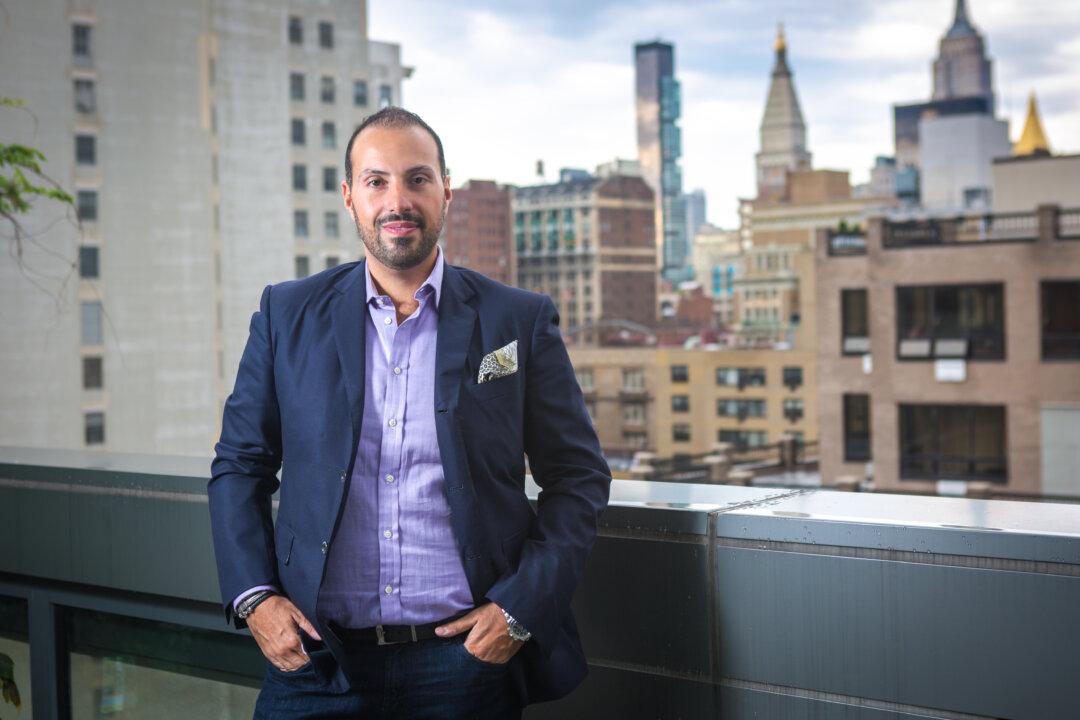NEW YORK—Annette Hankins was 14 when she first entered foster care. She ran away from home because she was pregnant and didn’t want her mother to find out.
Hankins is now a 19-year-old high school senior. She has two young children: her son Tayvon Hankins, 4, and her daughter, Neveah Rivera, 2. She had been in foster care with her two children until recently.
Balancing two children, her schoolwork, and trying to still be a teenager hasn’t been easy for her.
“I felt like I wasn’t the best parent, ‘I’m 14 I don’t know what I’m doing,’” she said.
Hankins attended parenting classes through her foster care providers, but felt like they were just telling her things she already knew.
She was living at Inwood House on the Upper East Side when she was offered a different type of parenting program. She is video recorded interacting with her children.
The Program
The program, called the SPIN Video Interaction Guidance (VIG) Program runs in six cycles. One week, the parents are recorded interacting with their children. The following week, they review an edited video during a feedback session. The program requires a total of 13 visits and can take about four months to complete.
The first time Hankins saw her video she was self-conscious. “I looked ugly. I thought, ‘Why do I look like that?’” But over time, she found value in the program.
The program focuses on the positive aspects of the interactions between the parents and the children, videoing everyday situations with a goal to help parents improve.
“It was a motivation to keep going and to figure out how to parent better,” Hankins said.
After her daughter was born, she felt really worried that she would not be able to give both children the same amount of attention. She discussed her concerns with Yasmin Khan, her video interaction guidance trainer. They decided to video situations where she had to balance her two children, like bathing both of them at the same time.
During that session, after bathing her infant daughter, Hankins wrapped her up in a towel and put her in a stroller. She then finished bathing her son, and opened up her daughter’s towel. “She was full of poop!” she said.
Khan said she does not point out things that the parent did not do well when they review a video. Instead, she might ask the parent questions like, “What challenges did you face doing this?”
“As a self-viewer, you would see some of the things that were not so pleasant, and you would self-correct it,” Hankins said.
Hankins now thinks about how to be a better parent to her children. “You’re not living for yourself anymore you are living for them,” she said.
She learned ways to respond to her son’s tantrums. She would say, “Tayvon let me know when you’re ready,” and wait.
Now Tayvon doesn’t bother to throw tantrums, Hankins said, because he doesn’t want to wait so long for her to respond to him.
“As a parent it is really hard. I was in foster care—everything is negative. I don’t know how to do this,” Hankins said. “These were the first people to get on the side of the wall that I am on.”
Building on the Strengths
Coordinator of the SPIN VIG Program at Inwood House Nancy Meyers said the immediacy of seeing the video, and the fact that it is strengths-based, makes the program effective for the young mothers and fathers.
“You really work to strengthen the parent-child relationship,” Meyers said.
Meyers said one little girl would scream whenever her mother started brushing her hair, and it was a stressful situation for both of them. During the videoing session, Meyers reminded the mother how happy her daughter had been in a previous video when she had sung to her. The mother tried singing to her daughter as she brushed her hair, and the child did not scream.
Meyers has been running the SPIN Program at Inwood House for nine years.
“I have never not found positives in 10 minutes. No matter how challenged a parent is, you are going to see strengths,” Meyers said. “It could be something simple like the child looks up, the parent looks down, the child breaks into a smile. Then you can do that frame by frame.”
She said that Hankins has become “so thoughtful in her parenting,” thinking about what her son wants, and the intentions behind his actions.
Hankins hopes to graduate high school in January and applied to John Jay College of Criminal Justice, where she wants to major in forensics.
She now has her own apartment in the Bronx, and started to mend her relationship with her mother. “I really, really love her,” Hankins said.
Foster Care in New York City
More than 5,000 children in New York City (NYC) enter foster care annually, according to the New York City Administration for Children’s Services. More than 12,500 children are currently in foster care.
The average length of stay in foster care is 334 days in New York City, with more than half of 10- to 13-year-olds experiencing more than one placement during the time they are in foster care, according to Raising the Bar for Health, a report published by Council of Family and Child Caring Agencies.





